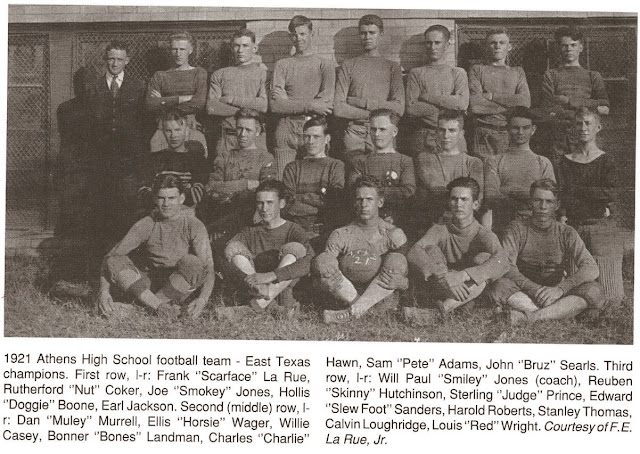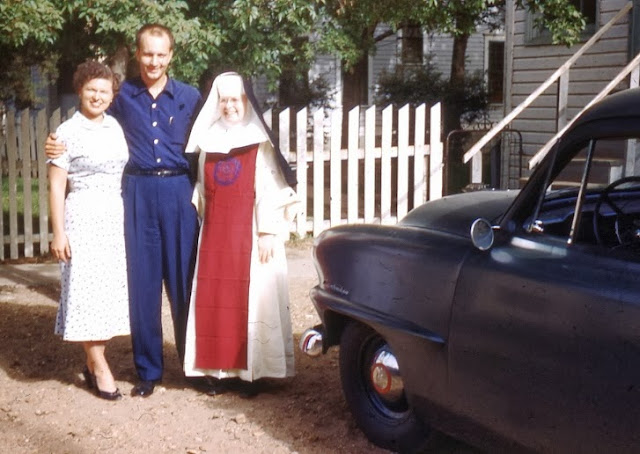While writing about the Wilmette, Illinois, townhouse my paternal grandparents lived in briefly in the mid-1950s, I decided to see if I could find (via Google Maps Street View) the long-time Wilmette home of my paternal great Aunt Gret and Uncle Lee, Leo John Pape (1893-1979) and Margaret Anna "Gretchen" Reis Pape (1886-1947).
The house was located at 210 17th Street in Wilmette, and Lee and Gret lived there from at least 1927 (according to the Evanston City Directory, page 843, which included Wilmette). The 1930 Census shows a couple of lodgers, 63-year-old public school teacher Marion A. Long and 65-year-old insurance saleswoman Emma V. Hubbard, both born in Maryland, living with them in the large house.
After Gret's death in 1947, Lee invited some of his single and widowed siblings (including Walter Pape and Martha Pape Bleidt) to live with him, until he died in 1979. Only Aunt Martha outlived him - she moved to a retirement home after Lee's death.
The house was built (according to real estate records) somewhere between 1923 and 1926. Here is a photo of the house from about 1947, taken by a member of the Bleidt family (Charles, his wife Martha Pape Bleidt, and children Mary Jane and Jack - whose godparents were Lee and Gret):
My father described the house's setting a little when reminiscing about a bicycle trip he and Jack made to the house:
This next picture, which shows a car in the driveway on the other side of the house, also gives a view of the house next door. This was helpful when trying to pinpoint the house in Google Maps Street View, as the addresses in that tool aren't always quite accurate.
Here is Uncle Lee and Aunt Gret's house, with its white stucco neighbor to the right, as they appeared in about August 2011:
And here is the house as it appeared in about March 2013. The vacant lot to the left is gone, with a house in its place that was apparently built in 1966.
This 2,655 square foot house on a 6,400 square foot lot recently sold, on August 12, 2013, for $642,000. It was described (abbreviations spelled out by me) as follows:
The photos of the inside (no longer available online) were gorgeous. It's probably been remodeled and refurbished since Uncle Lee and Aunt Gret lived there, but with the basic bones of the house, there was a lot to work with.
© Amanda Pape - 2013 - click here to e-mail me.
The house was located at 210 17th Street in Wilmette, and Lee and Gret lived there from at least 1927 (according to the Evanston City Directory, page 843, which included Wilmette). The 1930 Census shows a couple of lodgers, 63-year-old public school teacher Marion A. Long and 65-year-old insurance saleswoman Emma V. Hubbard, both born in Maryland, living with them in the large house.
After Gret's death in 1947, Lee invited some of his single and widowed siblings (including Walter Pape and Martha Pape Bleidt) to live with him, until he died in 1979. Only Aunt Martha outlived him - she moved to a retirement home after Lee's death.
The house was built (according to real estate records) somewhere between 1923 and 1926. Here is a photo of the house from about 1947, taken by a member of the Bleidt family (Charles, his wife Martha Pape Bleidt, and children Mary Jane and Jack - whose godparents were Lee and Gret):
 |
| 1947? "Uncle Lee's house in Wilmette" 210 17th St., Wilmette, IL - photo courtesy Bill Parker |
My father described the house's setting a little when reminiscing about a bicycle trip he and Jack made to the house:
They owned two adjoining lots with the house and garage on one lot. Aunt Gret had a huge well-cultivated garden which occupied most of the other lot. They grew lots of greens like lettuce, radishes, cucumbers, etc., and cooking vegetables like potatoes, carrots, green beans, cauliflower, etc. We had fun picking some of the ripe vegetables with her. I really liked the radishes. She also gave us some to take home.The second lot, with the garden, is apparently to the left of the house in the photograph above.
This next picture, which shows a car in the driveway on the other side of the house, also gives a view of the house next door. This was helpful when trying to pinpoint the house in Google Maps Street View, as the addresses in that tool aren't always quite accurate.
 |
| Jack Bleidt - 1947? "Uncle Lee's house in Wilmette" 210 17th St., Wilmette, IL - photo courtesy Bill Parker |
And here is the house as it appeared in about March 2013. The vacant lot to the left is gone, with a house in its place that was apparently built in 1966.
This 2,655 square foot house on a 6,400 square foot lot recently sold, on August 12, 2013, for $642,000. It was described (abbreviations spelled out by me) as follows:
Lovely,sunfilled traditional home w/natural woodwork and charm throughout. Large living room with gas fireplace. Kitchen with pantry and breakfast room. Formal dining room with built-ins. 1st floor family room or 5th bedroom with new full bath. Master bedroom with fireplace. 3 additional bedrooms plus sitting room and bathroom. Open unfinished basement . Lots of storage. Nice back yard and 2 1/2 car garage.
The photos of the inside (no longer available online) were gorgeous. It's probably been remodeled and refurbished since Uncle Lee and Aunt Gret lived there, but with the basic bones of the house, there was a lot to work with.
© Amanda Pape - 2013 - click here to e-mail me.

















.jpg)





























